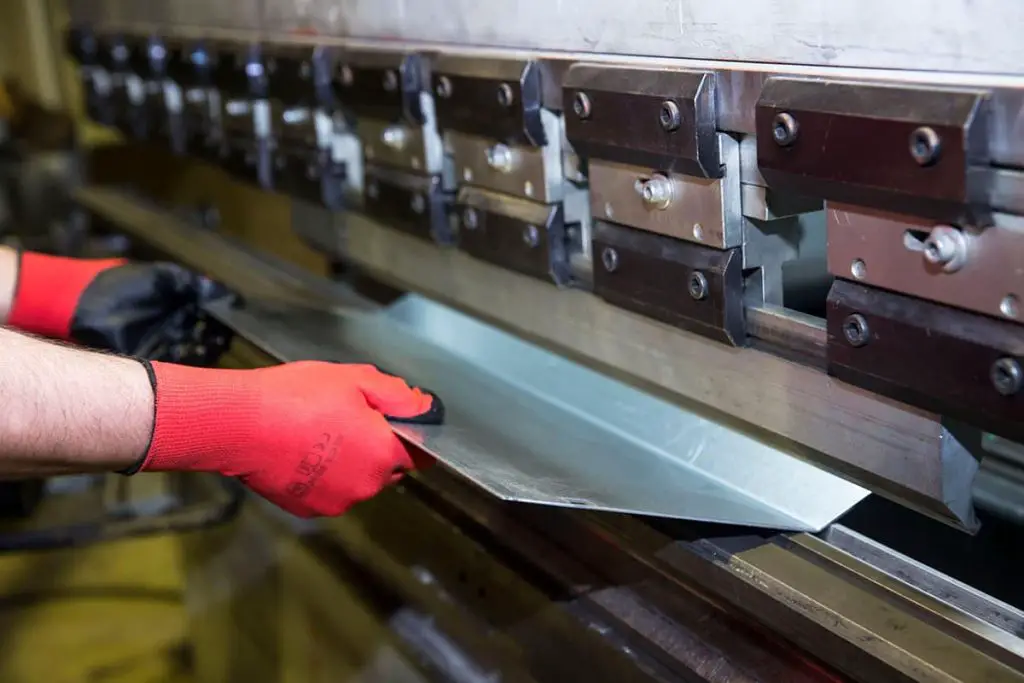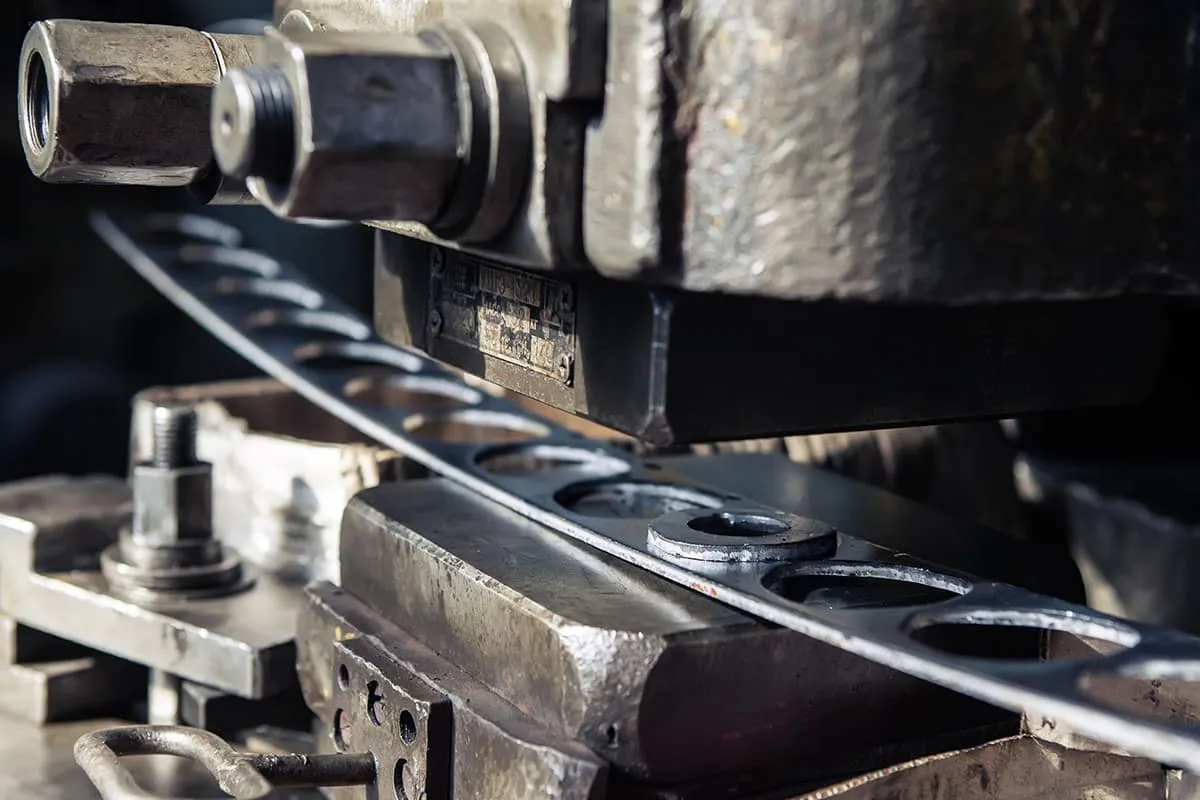Sheet metal processing primarily involves cutting, bending, deep drawing, cold extrusion, and other volume stamping processes. Different stamping techniques have different requirements for the sheet metal, and the choice of sheet metal material should be considered based on the product’s general shape and processing technology.
(1) The influence of material on cutting processing
Cutting requires the sheet material to have sufficient plasticity to ensure no cracking occurs during the process. While a vast majority of materials can meet the cutting requirements to varying degrees, the wear and tear on the mold and the quality of the cutting will vary depending on the material.
Soft materials (such as pure aluminum, rust-resistant aluminum, brass, pure copper, low carbon steel, etc.) have excellent cutting performance. Brass, in particular, performs the best, resulting in components with smooth cross-sections and very little inclination after cutting.
Hard materials (such as high carbon steel, stainless steel, hard aluminum, super hard aluminum, etc.) do not yield high-quality results after cutting, with significant unevenness on the cross-sections, especially for thicker materials. The more brittle the material, the more likely it is for tearing to occur during cutting.
Many non-metal materials can also undergo cutting, but due to the presence of minute internal cracks, inhomogeneity, anisotropy, laminations, and other drawbacks in non-metal materials, most require special auxiliary processing. After cutting, materials with sufficient plasticity need deburring or finishing; brittle materials and thick materials, on the other hand, must be appropriately heated beforehand to increase plasticity.
(2) The influence of material on bending processing

For sheet metal being bent, it should possess ample plasticity, low yield strength, and a high modulus of elasticity. Sheets with high plasticity are less likely to crack during bending, and those with lower yield strength and higher elasticity will have less spring-back deformation, resulting in precisely shaped bends. Materials with good plasticity like low carbon steel (with no more than 0.2% carbon mass fraction), brass, and aluminum are easy to bend.
Materials with higher brittleness, such as tin (Sn6.5-01), spring steel (65Mn), hard aluminum, and super hard aluminum, require a large relative bending radius (r/t) during bending to prevent cracking.
Additionally, it’s essential to note that the material’s condition significantly affects its bendability.
Non-metal materials, such as larger cardboard and organic glass, can only be bent after being preheated, and they require a larger relative bending radius (generally r/t>3~5).
(3) Impact of Material on Draw Forming
Sheet metal draw forming, particularly deep drawing, is one of the more challenging processes in sheet metal fabrication. A suitable material should not only allow for a small depth and simple shape with smooth transitions in the draw forming process, but also possess high plasticity, low yield strength, and good stability. Otherwise, it can easily result in overall distortion, localized wrinkling, or even tearing of the part. Hard materials are not conducive to draw forming.
The larger the yield strength and the thickness direction coefficient (which accounts for anisotropy due to factors such as fibrous tissues produced during sheet rolling), the smaller the strength ratio of the sheet, and the better the stamping performance, allowing for greater deformations. When the thickness direction coefficient (γ) is greater than one, deformation in the width direction is easier than in the thickness direction.
The larger the γ value, the less likely the sheet is to thin and fracture during the draw forming process, indicating better drawability. A high strain hardening exponent (slope of the actual stress-strain curve during stretching, represented by n) facilitates the spread of deformation into low deformation areas during processing, promoting a more uniform strain distribution and reducing localized deformation.
Therefore, the n value is crucial for draw forming and bulging processes. Materials known for good drawability include pure aluminum and its alloys, low carbon steel (carbon mass fraction not exceeding 0.14%), soft brass (copper mass fraction between 68% and 72%), and austenitic stainless steel among others.
(4) Impact of Material on Cold Extrusion and Other Bulk Stamping Processes
Materials suited for cold extrusion and other bulk stamping processes should have high plasticity and low yield strength. The most appropriate materials include aluminum, copper, and low carbon steel.
(5) Impact of Sheet Thickness Tolerance
Excessive sheet thickness tolerance, which refers to actual thickness exceeding the standard permissible deviation, can lead to part cracking, surface wrinkling, spring back after bending, and even significant die accidents. It is one of the three critical factors affecting the success of stamping.
Fluctuations in steel sheet thickness tolerance can affect the pressure exerted by the die on the part and the ease of metal flow, subsequently leading to part cracking and wrinkling during stamping.
(6) Impact of Surface Defects on Sheet Material
As per regulations, hot-rolled steel sheets should not have harmful defects such as cracks, scabs, folds, bubbles, delamination, and inclusion. However, minor and localized defects such as pitting, depressions, or scratches, which do not exceed half the thickness tolerance in depth (or height), are permissible, provided the minimum thickness of the steel sheet is maintained.
The presence of any surface defects in cold-rolled and hot-rolled steel sheets, particularly those exceeding the standard permissible defects, can directly lead to part cracking, affect paint quality, and compromise the overall appearance of the product.
(7) Comparison of Processability of Common Sheet Materials
Table 1-6 Comparison of Processability of Common Sheet Materials.
| Materials | CNC Press Machine Performance | Laser Cutting Performance | Bending Performance | Swelling Rivet Nut Process | Rivet nut pressing process | Surface spraying | Cut edge protection performance |
| Cold-rolled steel plate with blue zinc coating | Excellent | Excellent | Excellent | Excellent | Excellent | Average | Better |
| Cold-rolled steel plate with color zinc coating | Excellent | Excellent | Excellent | Excellent | Excellent | Average | Excellent |
| Continuous electroplated zinc copper plate | Excellent | Excellent | Excellent | Excellent | Excellent | Average | The worst |
| Hot-dip galvanized copper plate | Excellent | Excellent | Excellent | Excellent | Excellent | Average | Subpar |
| Aluminum-zinc coated plate | Excellent | Excellent | Excellent | Excellent | Excellent | Average | Poor |
| Stainless steel | Poor | Excellent | Average | Poor | Very poor | Poor | Excellent |
| Rust-resistant aluminum plate | Average | Very poor | Excellent | Excellent | Excellent | Average | Excellent |
| Hard aluminum, ultra-hard aluminum plate | Average | Very poor | Very Poor | Excellent | Excellent | Average | Excellent |
| T2 copper plate | Excellent | Very poor | Excellent | Excellent | Excellent | Average | Excellent |
| Yellow steel plate | Excellent | Very poor | Excellent | Excellent | Excellent | Average | Excellent |
Note: The data in the table is only for qualitative reference.

